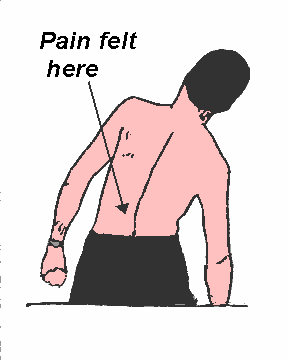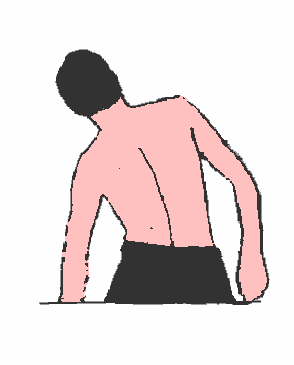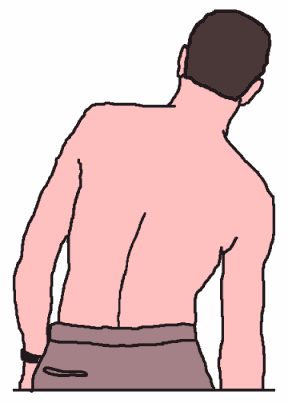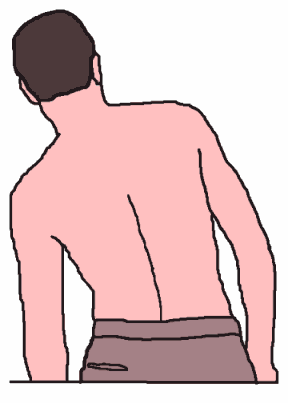| ||||||||||
|---|---|---|---|---|---|---|---|---|---|---|
|
Introduction If you have pain upon side bending to the left or to the right, this posture movement awareness exercise will give you some insight into the problem. Please see the discussion for possible causes. You will need a friend with a camera on a tripod. Also, it is good to have a light source from a side window so that shadowing will make the contour of the spine obvious. Side bending to the left - Start Position:-
(Caution: Do not push beyond the limits of pain).
|
Case Study: Pain upon side bending to the right:-
|
Discussion:-
If you have back pain that is routinely triggered by a side bend to the left (or perhaps to the right), you may have a pelvis that is twisted so as to be out of alignment with your chest. Case Study: Stabbing Left Sided Mid-Lumbar Back Pain when bending to the right: The diagrams to the left depict a dairy cow veterinarian who habitually uses his left arm for cattle pregnancy testing. This has resulted in an imbalance such that when his chest "looks" straight ahead, his pelvis "looks" to the left, (note the area of increased mobility in diagram 1), and bending to the right causes a stabbing left sided lower back pain. Corrective Action:- The patient is instructed to twist his pelvis to "look slightly to the right" and his chest to "look slightly to the left", and to maintain this body positioning while standing, walking and running. The patient reports that initially this feels strange. After 6 weeks, the pain and "kink" in the lower left back is gone (see diagram 3). Conclusion:- A "twisted" pelvis (one that habitually looks to the left or right) is one of the possible causes of left or right sided lower back pain. Reference:-
|
||||||||



